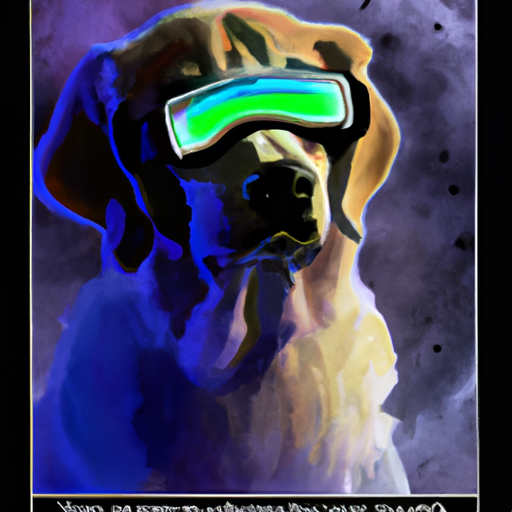As a dog owner, you’ve probably wondered how your four-legged friend navigates during those late-night walks or how they manage to find that hidden toy in a dimly lit room. Well, you aren’t alone. Many people are curious about ‘how dogs see at night.’
In this comprehensive guide, we will unravel the secrets of canine night vision, discussing the science behind it, the differences between human and dog vision, and tips on how to care for your dog’s vision health.
Table of Contents
- The Science Behind Canine Night Vision
- Comparing Human and Dog Vision
- How to Care for Your Dog’s Vision Health
- Frequently Asked Questions
Key Takeaways
- Dogs have superior night vision compared to humans, thanks to their evolutionary adaptations.
- There are significant differences in the way humans and dogs perceive the world visually.
- Proper care and regular check-ups can help maintain your dog’s vision health.
The Science Behind Canine Night Vision
Dogs have evolved over thousands of years to become the creatures we know and love today. This evolution has led to some fascinating adaptations, particularly in their vision.
Dogs have a special layer of tissue in their eyes called the tapetum lucidum, which acts like a mirror, reflecting light back through the retina. This amplifies the available light and allows dogs to see better in low-light conditions. You may have noticed this when your dog’s eyes seem to glow in the dark – that’s the tapetum lucidum at work!
Another factor that contributes to dogs’ superior night vision is the number of rods in their eyes. Rods are photoreceptor cells that detect light and motion. Dogs have more rods than humans, allowing them to see better in the dark. OneTopDog’s article on canine vision provides a more detailed explanation about this.
Comparing Human and Dog Vision
While dogs may have the upper hand in night vision, humans and dogs see the world quite differently.
For instance, dogs lack the color receptors that humans have, meaning they see fewer colors. Dogs see the world in shades of blue and yellow, whereas humans can see a full spectrum of colors.
In terms of visual acuity, humans also have dogs beat. Humans have a higher concentration of cones, the cells responsible for detecting color and detail. This means that while your dog may be able to navigate the backyard at night, you’re better at reading the fine print on the dog food bag.
You can explore more about these differences in this guide to understanding your dog’s senses.
How to Care for Your Dog’s Vision Health
Just like humans, dogs can experience vision problems as they age. Regular vet check-ups are crucial to catch any potential issues early.
Here are some tips to care for your dog’s vision:
-
Regular Vet Check-Ups: Schedule regular vet visits to ensure your dog’s eyes are healthy. Vets can detect early signs of cataracts, glaucoma, and other eye diseases.
-
Proper Nutrition: A balanced diet rich in antioxidants can help maintain your dog’s eye health.
-
Keep Their Eyes Clean: Regularly check your dog’s eyes for any signs of discharge, redness, or inflammation.
Learn more about how to care for your dog’s eyes on OneTopDog.
Frequently Asked Questions
1. Can dogs see in complete darkness?
While dogs have superior night vision compared to humans, they cannot see in complete darkness. Their night vision works best in low light.
2. Do all dogs have the same night vision?
No, night vision can vary among breeds. Breeds that were historically night hunters tend to have better night vision.
3. Can my dog’s night vision deteriorate with age?
Yes, just like humans, a dog’s vision can deteriorate with age. Regular vet check-ups can help detect any issues early.
To conclude, your dog’s ability to see at night is due to evolutionary adaptations that allow them to make the most of available light. While their world may look different from ours, their unique vision equips them perfectly for their canine needs. As a responsible pet owner, understanding how your dog sees can help you provide the best care for your furry friend.



